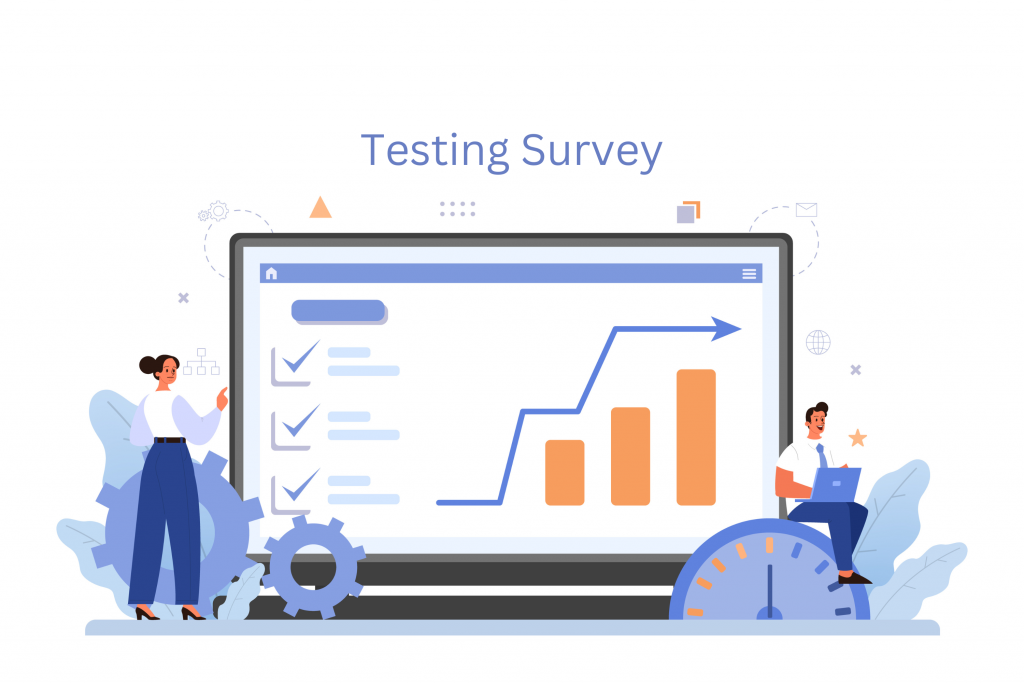
Marketer’s Guide to Ad Concept Testing Surveys
Ad concept testing surveys are like taking a test drive before purchasing a car.
Buying a car is a large investment, so the vehicle must meet all your expectations. The same can be said for marketing and advertising campaigns.
Would you purchase the vehicle if you had to guess what the gas mileage would be, if you had to guess what the color of the interior was, if you had a guess what features your family would want for your trip across the country next summer?
Probably not.
Ad testing is the process of putting different ads in front of a sample of your target audience and asking for feedback on them. You can run ad tests on an entire ad or specific aspects of it and collect feedback on anything from how much the ad stands out to how believable they find it.
So why would a brand want to jump into an advertising campaign without knowing what to expect, how the audience will receive the ad, and how well it will perform?
You shouldn’t.
In this ultimate guide, our market research company provides a comprehensive overview of ad concept testing surveys. Keep reading or skip ahead to a section of interest below.
Don’t need a recap? Let’s cut right to the chase.
Using market research to put ad concepts to the test
We have all been there. The light bulb goes off in your head. This is the golden idea for an advertisement about your company’s newest offering.
It is engaging, entertaining, and effective all at once. It sounds like a recipe for success!
But wait…what if the message doesn’t ultimately resonate with the audience? You get it. Your team gets it. But will consumers get it?
What if you spend your entire marketing budget on an advertisement that doesn’t offer any ROI?
And to top it off, your co-worker just had another great idea that sounds like it could work, too.
So, where does you’re marketing, and advertising team go from here?
Ask key questions among your target audience and get answers about factors such as:
- Does our ad copy and messaging resonate?
- Are we using the right graphics and visuals to drive home our message?
- What are the best advertising channels for these ads?
- Is the placement and layout of the ad easy to understand?
- Is this ad memorable?
- What does the target audience like and dislike about the ad?
- What is the first thing that draws their attention?
Whether the goal is awareness or conversions, the only way to really know if your ad is compelling enough is to concept test.
Once the feedback is gathered from respondents, an analysis of the data will often reveal new ideas and revisions to give your campaign the best chance for success.
You’ve got a great idea for an ad, but now what? Ad concept testing will provide you with the right answers by gathering quality feedback about your concept.
The Benefits of Conducting Ad Concept Testing Surveys
There are several reasons brands choose to conduct marketing and advertising market research.
Our market research company often recommends concept testing to brands who are:
- Promoting a new product or service
- Referencing a sensitive topic
- Speaking to a new target demographic or market
- Debating between multiple different designs
- In need of proof of concept for leadership teams or investors
Benefit #1: Maximize Your Advertising ROI
Using data to select the right campaign is almost sure to save and make your company money.
Before you invest any unnecessary time and resources into these ideas, find out which one gives you the best chance to increase the return on investment.
Sure, a return of 2X or 3X your investment is great
Benefit #2: Gain Real Consumer Reactions
Ad concept testing allows a company to put several ideas in front of a target audience and get honest reactions to help make data-driven decisions.
Typically after developing new advertising designs, a marketing team will present their concepts to a larger group of decision-makers.
The decision-makers may be a leadership team, a client, or whoever must sign the dotted line to give a marketing campaign the green light.
Unfortunately, this process assures no one that the campaign will actually work.
Think about the number of times brands run a commercial or marketing campaign and receive a great deal of backlash.
Benefit #3: Data-Driven Marketing Strategy
In the marketing realm, it seems like best practices and industry standards are constantly changing. What worked in Quarter 1 may be considered a flop in Quarter 2.
It’s challenging to keep up with the latest marketing trends on top of your already busy work schedule.
The second you feel like you’ve mastered one strategy such as paid digital marketing or search engine optimization, Google comes out with new rules marketers should abide by.
The reason it seems like the marketing industry is continuously evolving is that it so heavily relies on consumer behavior and trends.
The more customer expectations, preferences, and needs change, the more our advertising strategies must change with it. For more information you can reach us at www.philomathresearch.com